Orkney can be a tough place to fit into a trip to Scotland. It lies far to north of the common visitor attractions and requires either a ferry or a flight before you can feel that sweet Orkney turf beneath your feet. For many travelers, that often leaves them one solid day to explore Orkney’s mainland – forget about Orkney’s other interesting islands, places like Westray, Rousay, and Hoy. Such a short amount of time requires a healthy dose of tactics if you want to squeeze in as much as possible. There’s no better way to spend that beautiful day on Orkney than to connect the dots of the stunning, ancient monuments on Orkney’s mainland (though if the weather doesn’t cooperate consider a day at Highland Park distillery).
What follows here is a little guide to my favorite sites on Orkney’s mainland, in order of visitation. Most of the sites don’t require anything other than your time and effort getting to them, though you must double-check their hours to avoid shaking your fists at the sky in tearful regret. A couple specific notes: Maeshowe does require booking (day of is usually fine) and the Brough of Birsay can only be reached when the tide is out(!!). For the purposes of this post, I’ll use Kirkwall as the starting and ending point, but Orkney’s mainland is small enough that this will be useful wherever you stay. Here’s a map of nothing but pins for the sites, just to give you an idea of how things are spread out.
So bust out your bullwhip and wool fedora and lets hit the road!
Maeshowe
Catch the A965 west out of Kirkwall and follow it until you hit Finstown. Keep on the A965 as it splits from the A966, and drive past Germiston and then Stoneyhill roads. The Maeshowe visitor center will be directly after Stoneyhill road on your left, while the actual site, which looks like a lonely hill in a pasture, stands across the street. Maeshowe is a neolithic chambered cairn going on 5,000 years old. Much like Newgrange in Ireland, a long, low passage leads into a tomb that is illuminated by the sun on the winter solstice. Perhaps only the vikings who looted the place in the 12th century know what was originally in Maeshowe; all they left were more than 30 runic inscriptions on the tomb’s walls – the largest such collection in the world! Enjoy the solemn feeling inside the dark, silent cairn and listen to the guide’s stories.
The Standing Stones of Stenness
Get back on the A965 and take the next right turn onto the B9055. This road runs between the Loch of Harray and the Loch of Stenness, and the Standing Stones of Stenness are immediately on the right after joining this road. To view the four stones here you’ll need to navigate the field of sheep who keep watch. The use of these stones, which scholars believe were once part of a 12-stone ring, are lost to time, though even as late as the 18th century they were part of Norse rituals, as the Odin Stone would suggest. Nonetheless, they are awesome monoliths that you can’t help but wonder at their creation.
The Ring of Brodgar
Follow the B9055 across the bridge between the two lochs and less than minute later you will see the majestic Ring of Brodgar piercing the sky to your left. Pull into the visitor parking lot across the street and follow the winding path to the ring. Did I mention you should have a windbreaker? It’s always really windy here. The Ring of Brodgar comprises 27 of 60 original megaliths in a perfect circle surrounded by a rock-cut ditch. As at the Standing Stones of Stenness, you are free to walk around the circle at your leisure – there are no fees, rails, guides, or custodians to ensure proper behavior. Be mindful and respectful, then lay your hand upon a stone and teleport to a distant time.
Skara Brae
Follow the B9055 for a ways, crossing the A967, until it ends at East Aith and the Loch of Skaill. Turn right onto the B9056 and follow it along the loch until you see signs for Skara Brae. This is the most polished stop on the trip and one of the most stunning. Skara Brae is the name of the neolithic village along the seashore that is 50 centuries old and in great condition since it was “mummified” for most of that time by a covering of earth. Browse among the submerged drystone buildings, and explore the reconstructed dwelling to get a sense of what ancient life was like. As this will likely be one of your longer stops, the café inside the visitor’s center is a good place to stop for lunch or tea.
The Brough of Birsay
Jump back on the B9056 and head north all the way until you hit the A967. Turn left and continue north until you arrive at the tiny, windblow town of Birsay. Looks for signs to the Brough of Birsay – you’ll want to turn left on an unmarked road that runs toward the sea. Follow it along the coast until you arrive at a little parking lot atop a small headland. The Brough of Birsay is separated from Orkney’s mainland by a watery causeway that’s traversable only when the tide is out. Check with the food van to get tide times before you cross – believe me, you’d hate to get stuck on the tidal island overnight. The site has been home to Christian missionaries, a Pictish fortress, and Norse earls over the centuries, and each of these periods have left ruins.
The Broch of Gurness
Hustle back across the causeway, jump in your car, and return to where you turned off the A967. This time, go straight onto the A966 and head east around the top of the island. Gradually the road will turn south as it roughly mirrors the coast. Keep your eyes peeled for signs to the Broch of Gurness near Evie. Follow many winding turns through farm fields until you arrive at the site’s parking lot. The Broch of Gurness is an iron age settlement overlooking Eynhallow Sound toward the isle of Rousay. The central broch is surrounded by several smaller buildings. Amazingly, shards of Roman vessels were found here that date from 60 AD. Did the “king” of Orkney submit to the Romans?
The Tomb of the Eagles
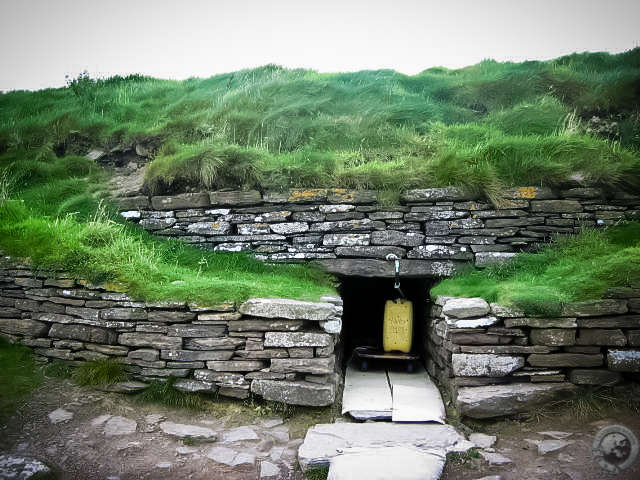
If you’re feeling like there’s still more to soak up in Orkney, then this last stop should give you your fill. The drive will take you to the opposite end of the mainland and beyond, and takes about an hour. Return to the A966 and go south to Finstown where you will pick up the A965 to Kirkwall. In Kirkwall, take the A963 around town to the A961 and follow that off the mainland, across Burray, to South Ronaldsay. At the southern tip of South Ronaldsay, turn left onto the B9041 and then follow signs to the Tomb of the Eagles. This is another chambered cairn just as old (if not older) than Maeshowe. Excavators discovered more than 16,000 human bones and 725 bones from birds like the white-tailed sea eagle inside. To get inside, you must lay on your back on a wheeled cart and use a pulley to slide in. This one is not for anyone afraid of the dark or small spaces!
After a trip like that you deserve a pint and a dram. Why not stop in at Helgi’s in Kirkwall and take care of that thirst?

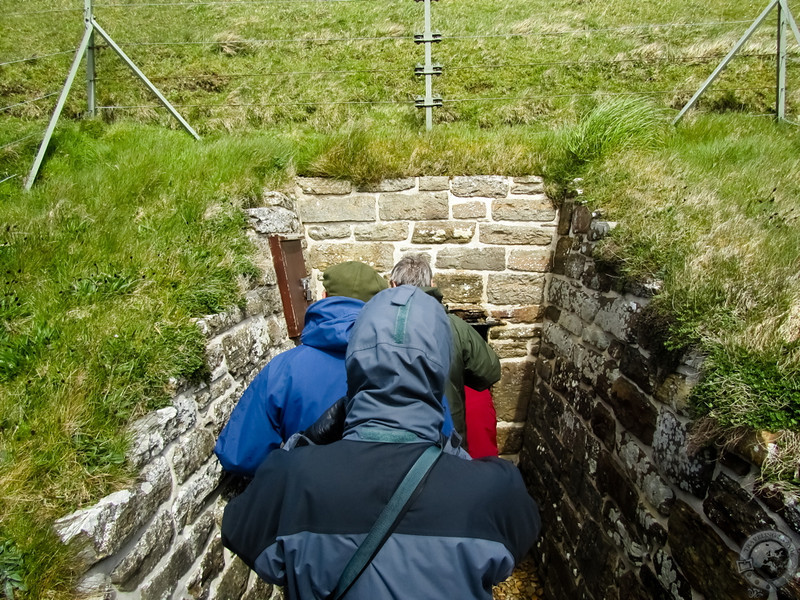
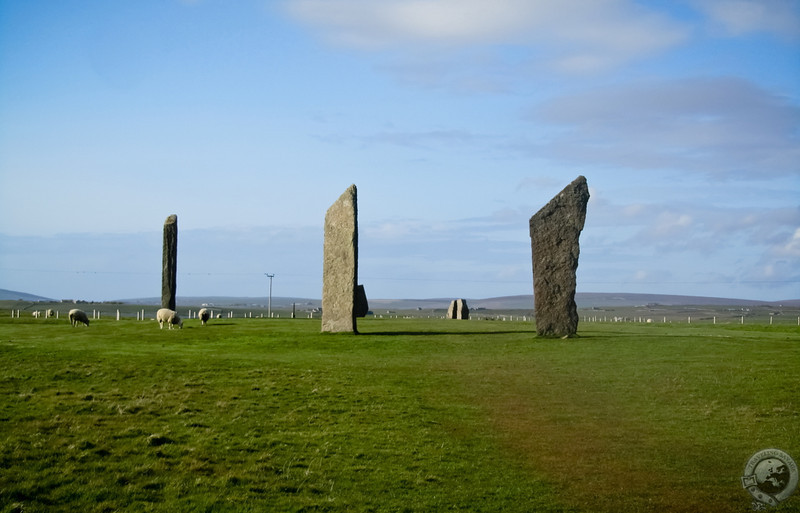
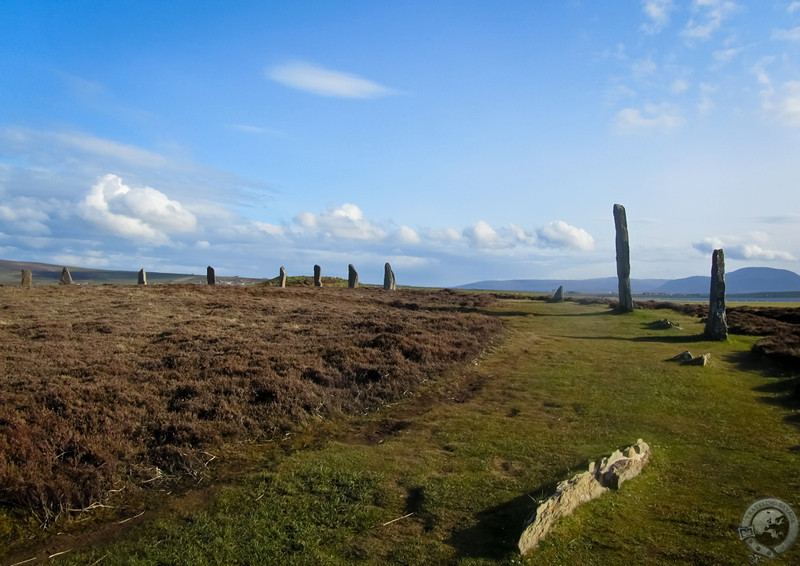
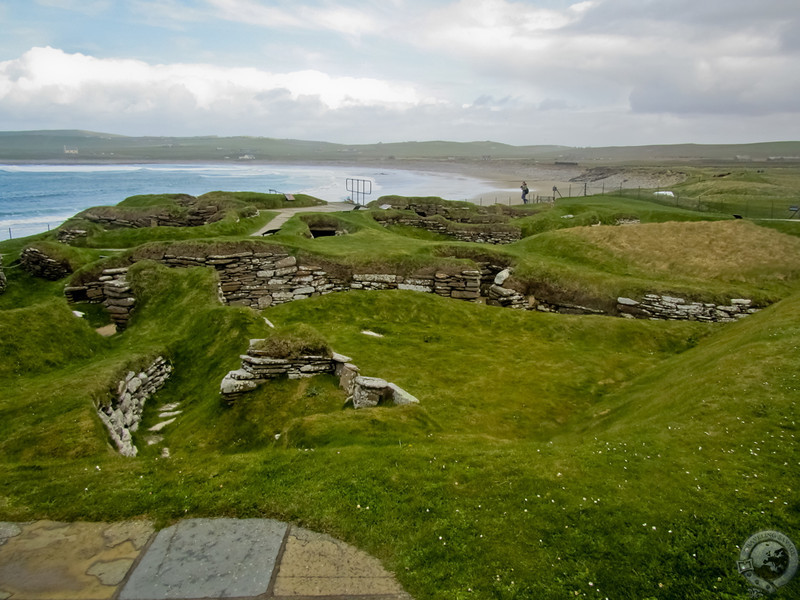
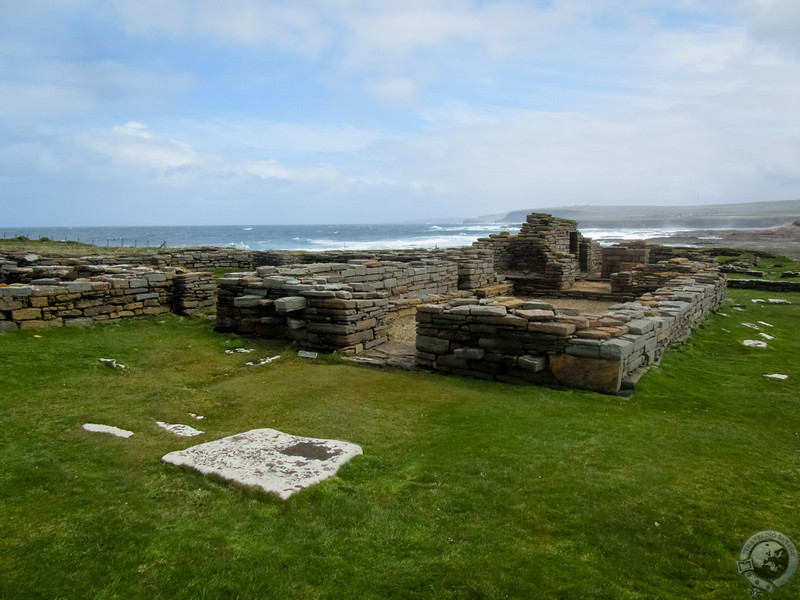
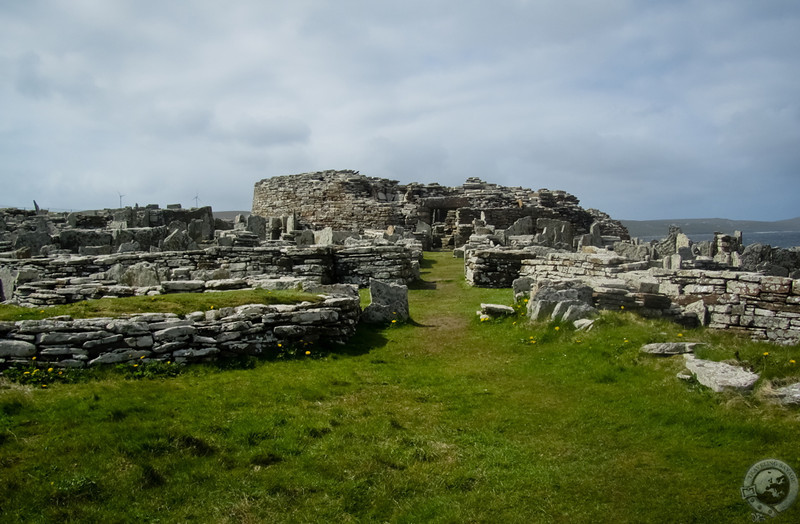
Love the history overview here, I never made it to Orkney when I was in Scotland. Wish I could stop by on my next trip!
Was it too far out of the way?
You mentioned in an earlier post that the weather used to be warmer in that region. When was that and how long? Some of these are 5000 year-old contemporaries and some “only” 2000 years-old? It’s interesting to think of these cultures in the context of the more well-known Egyptian, Roman, etc, and how in some cases peoples might have interacted, as you consider for the Broch of Gurness.
Skara Brae is the site anthropologists believe was evacuated due to changing temperatures. Dating shows the settlement began around 3180 BC and remained occupied until 2500 BC. Some time between those dates the weather on Orkney changed and became colder and wetter.
The Broch of Gurness is believed to have been built between 200 BC and 100 BC, though the interesting thing with many of these sites is that several cultures repurposed existing structures and locations, such as at the Brough of Birsay. The same thing happened at Jarlshof on Shetland where a stone age settlement much like Skara Brae was added to by Iron Age people like the Picts, which was then added onto again by Norse settlers at the end of the first millennia AD. The structures from all the cultures stand side by side.
A new point of interest while travelling into Orkney’s past is for sure the Ness of Brodgar dig, very close to the Ring of Brodgar, where the “stoneage-cathedral” is being revealed. Sightseeing is only possible during the digging-season in july/august. Some if the finest finds like the “Brodgar boy” are on display at the Stromnes museum on mainland Orkney.